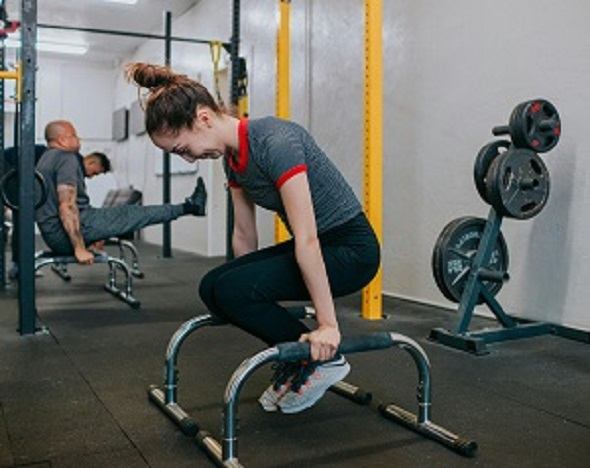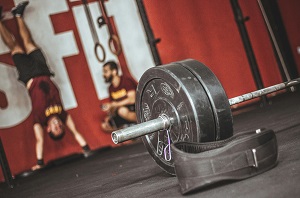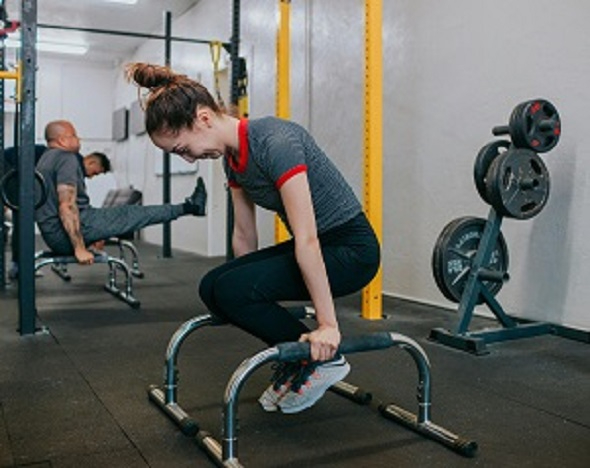
Physical activity is one of the most important elements of a healthy lifestyle. In an era where sedentary behaviors are increasingly common, maintaining an active lifestyle has become more critical than ever. Whether it’s through sports, exercise, or simply moving throughout the day, engaging in physical activity is essential not only for physical health but also for mental well-being.
What is Physical Activity?
It can include activities such as walking, running, swimming, biking, dancing, yoga, and even household chores like cleaning and gardening. The intensity of physical activity can vary, ranging from light activities, like walking or stretching, to vigorous exercises, such as running or weightlifting.
It is also important to distinguish between physical activity and exercise. While all exercise is physical activity, not all physical activity qualifies as exercise. Physical activity, on the other hand, is a broader term that encompasses any movement that leads to an increase in energy expenditure.
The Benefits of Physical Activity
Physical activity offers numerous benefits to both the body and mind. Its impact on overall health cannot be overstated, and it plays a critical role in preventing and managing various health conditions.
Physical Health Benefits
- This helps reduce the risk of cardiovascular diseases such as heart attacks, strokes, and hypertension. Aerobic exercises, like walking, running, and swimming, are especially beneficial in improving heart health by increasing heart rate and promoting better blood flow.
- Enhances Muscular Strength and Flexibility Engaging in resistance training exercises, such as weightlifting, resistance band exercises, or body-weight exercises (e.g., squats, push-ups), builds muscle strength and tone. Alongside resistance training, activities like yoga or Pilates improve flexibility and help maintain the health of joints and muscles.
- Supports Weight Management Physical activity plays a crucial role in both weight loss and weight maintenance. Regular exercise helps burn calories and boosts metabolism, making it easier to manage body weight. It also increases lean muscle mass, which helps with calorie expenditure even at rest.
- Boosts Immune System Function Consistent moderate-intensity physical activity enhances the immune system’s ability to fight off infections and illnesses. It increases circulation, which allows immune cells to circulate more efficiently throughout the body. Additionally, physical activity reduces inflammation and promotes the production of endorphins, which contribute to improved immunity.
- Improves Bone Health Weight-bearing activities, such as walking, running, and resistance training, help maintain bone density and strength. This is especially important as we age, as it helps reduce the risk of osteoporosis and fractures. Physical activity stimulates bone formation, improving bone health throughout life.
Mental Health Benefits
- Reduces Stress and Anxiety fitness activity has a profound effect on mental health, particularly in reducing feelings of stress and anxiety. Engaging in physical activity can also help distract the mind from stressors, providing a healthy outlet for emotions.
- Combats Depression Studies have shown that regular physical activity can be as effective as antidepressant medications in treating mild to moderate depression. Physical activity triggers the release of endorphins, chemicals in the brain that help alleviate feelings of sadness and promote a sense of well-being. Exercise also increases the availability of serotonin and norepinephrine, neurotransmitters that regulate mood and emotions.
- Improves Sleep Physical activity helps improve the quality of sleep by promoting deeper, more restful sleep. Engaging in moderate physical activity increases the production of sleep-promoting chemicals, such as adenosine, and helps regulate circadian rhythms. However, it’s important to avoid vigorous activity close to bedtime, as it may have the opposite effect and interfere with sleep.
- Enhances Cognitive Function Regular Material activity has been linked to improved cognitive function, including better memory, concentration, and problem-solving skills. Exercise increases blood flow to the brain, delivering oxygen and nutrients that support brain health. Additionally, physical activity stimulates the growth of new brain cells and enhances neuroplasticity, which plays a role in learning and memory.
- Boosts Self-Esteem and Body Image Manual activity can lead to improvements in physical appearance, such as weight loss or increased muscle tone, which can positively influence self-esteem. Regular exercise fosters a sense of accomplishment and can also create a positive feedback loop, motivating individuals to continue their efforts and pursue healthier habits.
Recommended Guidelines for Physical Activity

To reap the full benefits of physical activity, it is essential to engage in it regularly and in appropriate amounts. The American Heart Association (AHA) and the World Health Organization (WHO) recommend the following guidelines for adults:
- At least 150 minutes of moderate-intensity aerobic activity per week or 75 minutes of vigorous-intensity aerobic activity per week. This can be broken down into smaller sessions of 30 minutes a day, five days a week. Moderate-intensity activities include brisk walking, cycling at a moderate pace, or swimming. Vigorous-intensity activities include running, aerobic dancing, and high-intensity interval training (HIIT).
- Muscle-strengthening activities at least two days per week. This includes exercises like weight training, resistance band exercises, or bodyweight exercises.
- Flexibility and balance exercises. Activities such as yoga, Pilates, or tai chi improve flexibility, balance, and coordination, which are particularly important as we age to reduce the risk of falls and injuries.
Overcoming Barriers to Physical Activity
Despite the many benefits of Bodilyl activity, many people face barriers that prevent them from staying active. These can include time constraints, lack of motivation, limited access to facilities, and physical limitations. Overcoming these obstacles is essential to creating a sustainable and enjoyable physical activity routine.

- Time Management For many people, the primary barrier to Bodily activity is a lack of time. However, it is possible to incorporate exercise into daily routines by finding small windows of opportunity. For example, taking the stairs instead of the elevator, walking or biking to work, or incorporating short workouts into the day can make a significant difference.
- Finding Enjoyable Activities People are more likely to stick with physical activity if they enjoy it. It’s important to find activities that are both fun and effective. Whether it’s dancing, hiking, playing a sport, or doing a fitness class, finding a workout routine that aligns with personal interests increases the likelihood of long-term adherence.
- Setting Realistic Goals Setting achievable goals helps build momentum and provides motivation. Start with small, manageable objectives and gradually increase the intensity and duration of workouts as fitness improves. Celebrating these milestones, no matter how small, helps maintain motivation and a positive attitude toward physical activity.
- Social Support Engaging in physical activity with a friend, family member, or workout group can make exercise more enjoyable and motivating. Having a workout buddy also provides accountability and encourages consistency in exercising.
- Adaptations for Physical Limitations For individuals with Bodily limitations, such as chronic pain or injury, it’s important to consult with a healthcare provider to determine safe and appropriate forms of exercise. Low-impact activities like swimming, cycling, or walking can provide the benefits of physical activity without putting undue stress on the body.
The Importance of Physical Activity
Physical activity is vital for maintaining a healthy lifestyle. Engaging in regular exercise not only improves physical health but also enhances mental well-being. It helps control weight, boosts cardiovascular health, strengthens muscles, and increases flexibility. Regular movement can also reduce the risk of chronic diseases such as diabetes, hypertension, and heart disease. Beyond physical benefits, exercise promotes better sleep, reduces stress, and improves mood. Whether it’s walking, cycling, swimming, or strength training, incorporating physical activity into your routine improves overall quality of life and supports long-term health. Stay active for a healthier, more energetic future.
Conclusion
It provides significant benefits for both the body and the mind, from improving cardiovascular health and managing weight to boosting mental well-being and reducing stress. By adopting regular physical activity into daily routines, individuals can enhance their quality of life and reduce the risk of chronic diseases.
While barriers to exercise may exist, such as time constraints or Bodily limitations, there are practical solutions to overcome these challenges. By finding enjoyable activities, setting realistic goals, and seeking social support, anyone can begin to enjoy the benefits of physical activity. Ultimately, the goal is to make movement an integral part of daily life and prioritize long-term health and well-being.
FAQ:
Q2: How much physical activity should an adult aim for in 2025 to stay healthy?
A2: The recommended amount of physical activity for adults in 2025 remains consistent with previous guidelines, aiming for at least 150 minutes of moderate-intensity aerobic activity or 75 minutes of vigorous-intensity exercise per week. Additionally, muscle-strengthening activities should be done at least twice a week. Incorporating variety into exercise routines—such as combining cardio, strength training, flexibility exercises, and balance training—can ensure overall fitness and prevent boredom. These guidelines help reduce the risk of chronic diseases, improve cardiovascular health, and maintain a healthy weight.
Q3: How can physical activity be integrated into a busy lifestyle in 2025?
A3: Integrating physical activity into a busy lifestyle in 2025 is easier than ever with the rise of time-efficient workouts and technology. Shorter, high-intensity interval training (HIIT) sessions allow individuals to achieve a full-body workout in as little as 20 to 30 minutes. Smart devices and fitness apps provide reminders and personalized workout plans, making it easier to stay on track. Active commuting, such as walking or cycling to work, taking the stairs instead of elevators, and finding opportunities for movement throughout the day, can also help individuals stay active despite a busy schedule.
Q4: What role does physical activity play in preventing chronic diseases in 2025?
A4: Physical activity plays a crucial role in preventing chronic diseases by improving the body’s ability to manage various health conditions. In 2025, physical activity is recognized as a powerful preventive measure against diseases like type 2 diabetes, cardiovascular disease, hypertension, and certain cancers. Regular exercise helps regulate blood sugar levels, lowers blood pressure, improves cholesterol profiles, and strengthens the heart and lungs. It also supports healthy weight management, reduces inflammation, and improves insulin sensitivity, reducing the risk of developing chronic health conditions over time.

1 comment
[…] well-rounded Physicality,include both cardio exercises like jogging or cycling, and strength training with equipment like dumbbells, resistance bands, or kettlebells. Flexibility can be improved through […]